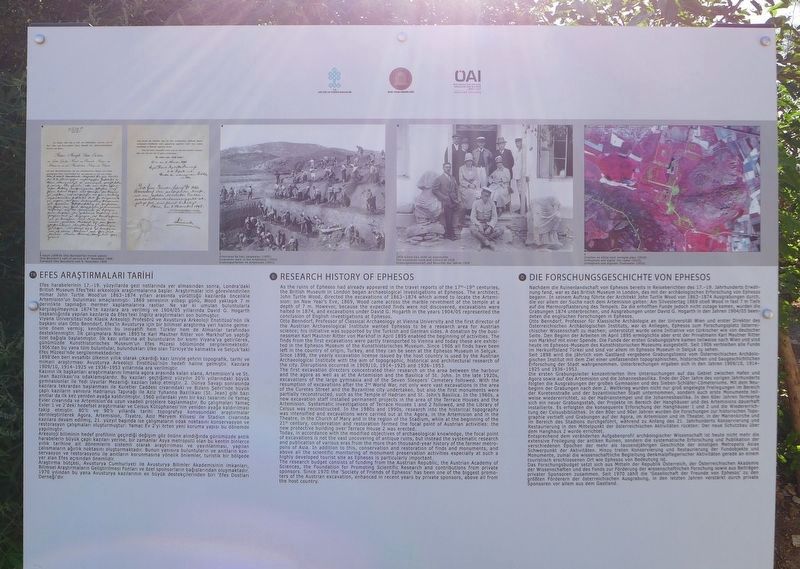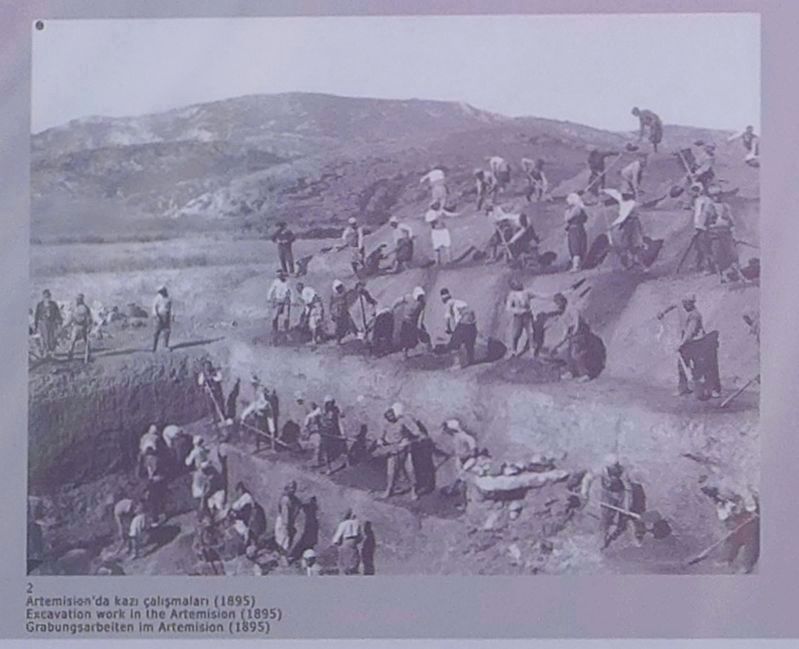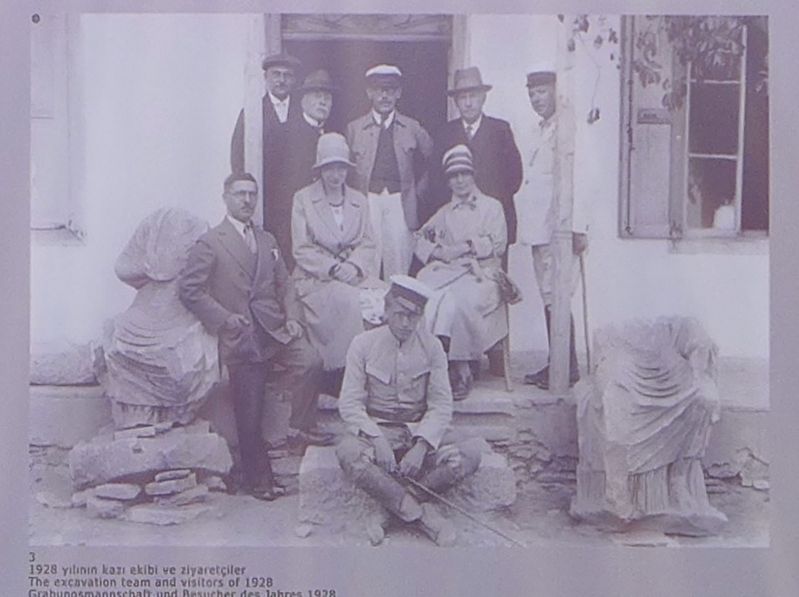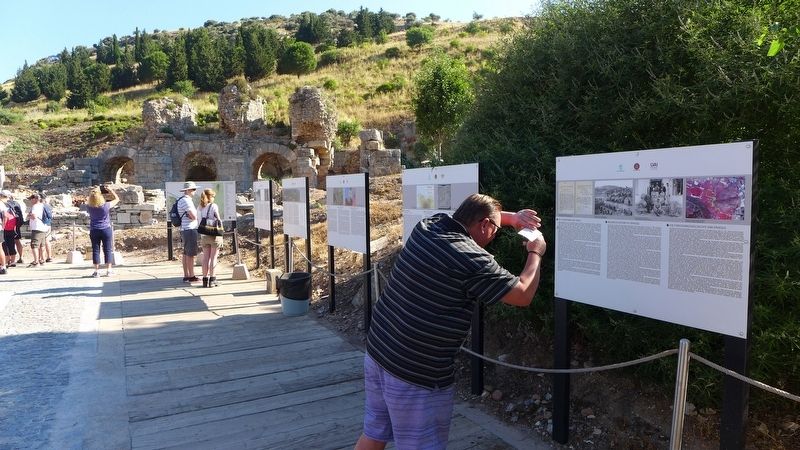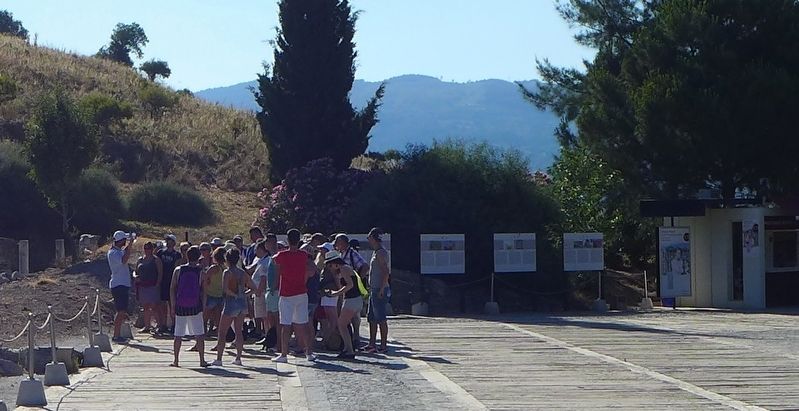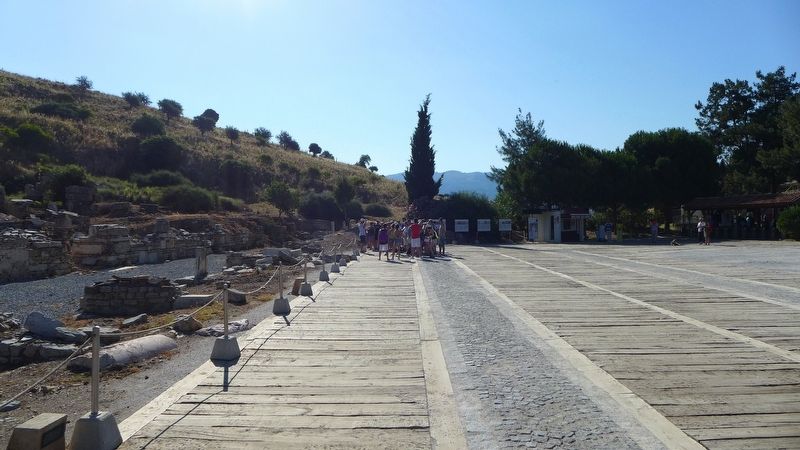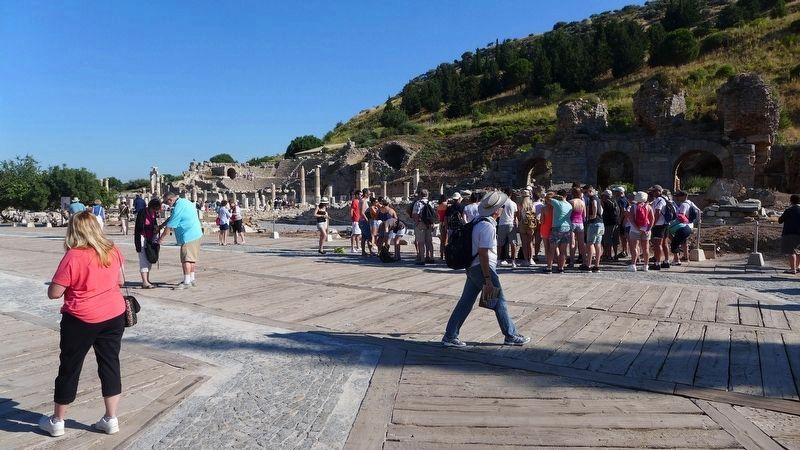Near Acarlar in Selçuk, İzmir, Turkey — West Asia or Southeast Europe
Research History of Ephesos
English Text:
As the ruins of Ephesos had already appeared in the travel reports of the 17th -19th centuries, the British Museum in London began archaeological investigations at Ephesos. The architect, John Turtle Wood, directed the excavations of 1863-1874 which aimed to locate the Artemision: on New Year's Eve, 1869, Wood came across the marble revetment of the temple at a depth of 7 m. However, because the expected finds were not discovered, excavations were halted in 1874, and excavations under David G. Hogarth in the years 1904/05 represented the conclusion of English investigations at Ephesos.
Otto Benndorf, Professor of Classical Archaeology at Vienna University and the first director of the Austrian Archaeological Institute wanted Ephesos to be a research area for Austrian science; his initiative was supported by the Turkish and German sides. A donation by the businessman Karl Mautner Ritter von Markhof in April 1895 enabled the beginning of activities. The finds from the first excavations were were partly transported to Vienna and today these are exhibited in the Ephesos Museum of the Kunsthistorisches Museum. Since 1906 all finds have been left in the country of origin, Turkey, and they can be seen at the Ephesos Museum in Selçuk. Since 1898, the yearly excavation license issued by the host country is used by the Austrian Archaeological Institute with the aim of topographic, historical and architectural research of the city. Disruptions occurred in 1909/10, 1914-1925 and 1936-1953.
The first excavation directors concentrated their research on the area between the harbor and the agora as well as at the Artemision and the Basilica of St. John. In the late 1920s, excavations of the large gymnasia and of the Seven Sleepers' Cemetery followed. With the resumption of excavation after the 2nd World War, not only were vast excavations in the area of the Curetes Street and the Byzantine city undertaken, but also the first monuments were partially reconstructed, such as the Temple of Hadrian and St. John's Basilica. In the 1960s, a new excavation staff installed permanent projects in the area of the Terrace Houses and the Artemision. Systematic investigations of Terrace Houses 1 and 2 followed, and the Library of Celsus was reconstructed. In the 1980s and 1990s, research into the historical topography was intensified and excavations were carried out at the Agora, in the Artemision and in the Theatre, in the Church of Mary and in the region of the Stadium, while at the beginning of the 21st century, conservation and restoration formed the focal point of Austrian activities; the new protective building over Terrace House 2 was erected.
Today, in accordance with
the modified objectives of archaeological knowledge, the focal point of excavations is not the vast uncovering of antique ruins, but instead the systematic research and publication of various eras from the more than thousand-year history of the former metropolis of Asia. In addition to this, conservation and restoration of finds and monuments, and above all the scientific monitoring of monument preservation activities especially at such a highly developed tourist site as Ephesos is particularly important.
The research budget consists of funding from the Austrian Republic, the Austrian Academy of Sciences, the Foundation for Promoting Scientific Research and contributions from private sponsors. Since 1970 the 'Society of Friends of Ephesos' has been one of the biggest promoters of the Austrian excavation, enhanced in recent years by private sponsors, above all from the host country.
Erected by Republic of Turkey Ministry of Culture and Tourism, and the Österreichisches Archaeology Institute.
Topics. This historical marker is listed in these topic lists: Education • Parks & Recreational Areas • Settlements & Settlers.
Location. 37° 56.161′ N, 27° 20.744′ E. Marker is near Acarlar, İzmir, in Selçuk. Marker can be reached
from Efes Yolu just south of Dr. Sabri Yayla Boulevard (İzmir Route D515) when traveling south. The marker is in an archaeological park that is about 3 km (2 miles) southeast of Selçuk. Touch for map. Marker is in this post office area: Acarlar, İzmir 35920, Turkey. Touch for directions.
Other nearby markers. At least 8 other markers are within walking distance of this marker. The Early Ephesos (here, next to this marker); The Hellenistic Ephesos (here, next to this marker); Roman Ephesos (here, next to this marker); Byzantine Ephesos (a few steps from this marker); Ancient Ephesos (a few steps from this marker); Baths at the 'State Agora' (within shouting distance of this marker); Processional Way (within shouting distance of this marker); The 'State Agora' (within shouting distance of this marker). Touch for a list and map of all markers in Acarlar.
More about this marker. This marker is one of the many markers that are situated at the archaeological park that displays the ruins of the ancient city of Ephesus. One web site boasts that the ruins that one can see and experience at Ephesus are, "better than Rome itself," and although some of the artifacts found in this area have been dated back to about 6,000 BC, most of what the visitors to the archaeological park see, date back to the glory years of Greece and Rome.
Credits. This page was last revised on February 2, 2022. It was originally submitted on March 6, 2018, by Dale K. Benington of Toledo, Ohio. This page has been viewed 206 times since then and 8 times this year. Photos: 1, 2, 3, 4, 5, 6, 7. submitted on March 7, 2018, by Dale K. Benington of Toledo, Ohio.
